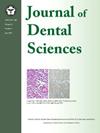Classification of immediate implant placement (IIP) and immediate implant placement with provisionalization (IIPP) based on the scores of surgical and restorative difficulties
IF 3.1
3区 医学
Q1 DENTISTRY, ORAL SURGERY & MEDICINE
引用次数: 0
Abstract
Background/purpose
Immediate implant placement (IIP) and immediate implant placement with provisionalization (IIPP) have gained popularity for reducing treatment time and improving patient outcomes. However, these techniques involve varying levels of surgical and prosthetic complexity. Existing implant classification systems primarily focus on timing and bone healing stages, but they do not fully address the combined surgical and restorative challenges presented by IIP and IIPP cases. The purpose of this article was to provide a classification system for IIP and IIPP based on their surgical and restorative difficulties.
Materials and methods
This retrospective clinical study evaluated immediate implant placement (IIP) and immediate implant placement with provisionalization (IIPP) cases performed between January 2009 and February 2024. All patients provided informed consent for their treatment data to be used for research purposes.
Results
The results of this retrospective study validate the classification system's ability to predict treatment complexity and outcomes. Cases classified as high difficulty in both surgical and restorative parameters showed lower survival rates (91.2 %), higher complication rates (35.3 %), and lower patient satisfaction scores compared to low and moderate difficulty cases.
Conclusion
The classification system proposed in this article, based on surgical and restorative difficulty, provides a structured approach to case selection, allowing clinicians to manage risks effectively and improve treatment outcomes. This classification system serves as a valuable tool for clinical decision-making, treatment planning, and managing patient expectations in immediate implant placement and provisionalization procedures.
基于手术和修复困难评分的即刻种植体放置(IIP)和即刻种植体放置预备(IIPP)的分类
背景/目的即刻种植体置入术(IIP)和即刻种植体置入术(IIPP)因缩短治疗时间和改善患者预后而受到欢迎。然而,这些技术涉及不同程度的手术和假体的复杂性。现有的种植体分类系统主要关注时间和骨愈合阶段,但它们不能完全解决IIP和IIPP病例所带来的手术和修复相结合的挑战。本文的目的是根据IIP和IIPP的手术和修复困难提供一个分类系统。材料和方法本回顾性临床研究评估了2009年1月至2024年2月间进行的即刻种植体置入术(IIP)和即刻种植体置入术(IIPP)的病例。所有患者都提供了用于研究目的的治疗数据的知情同意。结果本回顾性研究的结果验证了分类系统预测治疗复杂性和结果的能力。与低难度和中等难度的病例相比,手术和修复参数均为高难度的病例生存率较低(91.2%),并发症发生率较高(35.3%),患者满意度评分较低。结论本文提出的基于手术和修复难度的分类系统为病例选择提供了一种结构化的方法,使临床医生能够有效地管理风险并提高治疗效果。该分类系统可作为临床决策、治疗计划和管理患者对即刻植入和预备程序的期望的有价值的工具。
本文章由计算机程序翻译,如有差异,请以英文原文为准。
求助全文
约1分钟内获得全文
求助全文
来源期刊

Journal of Dental Sciences
医学-牙科与口腔外科
CiteScore
5.10
自引率
14.30%
发文量
348
审稿时长
6 days
期刊介绍:
he Journal of Dental Sciences (JDS), published quarterly, is the official and open access publication of the Association for Dental Sciences of the Republic of China (ADS-ROC). The precedent journal of the JDS is the Chinese Dental Journal (CDJ) which had already been covered by MEDLINE in 1988. As the CDJ continued to prove its importance in the region, the ADS-ROC decided to move to the international community by publishing an English journal. Hence, the birth of the JDS in 2006. The JDS is indexed in the SCI Expanded since 2008. It is also indexed in Scopus, and EMCare, ScienceDirect, SIIC Data Bases.
The topics covered by the JDS include all fields of basic and clinical dentistry. Some manuscripts focusing on the study of certain endemic diseases such as dental caries and periodontal diseases in particular regions of any country as well as oral pre-cancers, oral cancers, and oral submucous fibrosis related to betel nut chewing habit are also considered for publication. Besides, the JDS also publishes articles about the efficacy of a new treatment modality on oral verrucous hyperplasia or early oral squamous cell carcinoma.
 求助内容:
求助内容: 应助结果提醒方式:
应助结果提醒方式:


